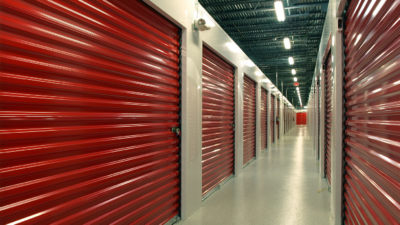The 1859 historical novel A Tale of Two Cities begins with a quote that’s become a literary classic: “It was the best of times, it was the worst of times… it was the season of light, it was the season of darkness, it was the spring of hope, it was the winter of despair.”
When Charles Dickens penned these words, England was emerging from a period of unprecedented transformation: the Industrial Revolution. Today’s industrial real estate sector has similarly undergone a time of intense activity and record-breaking performance.
Here’s how current market conditions have created the best and worst of times for each of these four real estate groups: brokers, owners, real estate directors and developers.
Brokers Facing High Demand and Low Inventory
Fiscal health has made it the best of times for industrial brokerages, but spiking rents and lack of inventory for clients has coincidentally made it the worst.
In 2021, overall net absorption posted its largest quarterly totals for the fourth consecutive quarter. There were occupancy gains of nearly 176 million square feet during the third quarter, bringing the year-to-date total to 413.3 million square feet, per the Colliers Q3 Industrial report.
For industrial brokerages, this market activity has resulted in soaring revenues – certainly a “spring of hope” during the instability of the pandemic. However, feeding the insatiable appetite for warehouse, distribution and fulfillment centers due to the explosion in ecommerce has run the well dry for many investors and tenants.
Owners Juggling Rising Rents and Steep Competition
Owners of industrial assets are well-positioned during this time of vast growth: fundamentals are expected to remain strong into 2022, asking rents are going up and capitalization rates are compressing.
According to the Colliers Q3 Industrial Outlook report: “Investment sales for the first three quarters of 2021 have totaled $94.8 billion, and cap rate compression continues, with 3% (and lower) deals becoming more common.”
Leasing rates, like almost every other metric, have broken records this year for industrial. By July, tenants had already absorbed 16.4 million square feet, closing in on the peak of 21.5 million that occurred in 2017.
Despite these positives, owners have not been left unscathed and have experienced their own valleys, namely juggling the needs of several valued tenants competing for space.
Spiraling Costs for Real Estate Directors
Factors including land scarcity, lack of inventory and rising construction costs continue to put upward pressure on rental rates for tenants. In Q3, asking rents were up 5.6% compared to 2020.
Occupiers looking to renew leases, expand operations or move sites face immense challenges. The shortage of available options and spiraling costs in today’s environment can be aptly characterized as the worst of times.
The good news? Real estate directors, and their position within organizations, are more important than ever. New solutions like co-warehousing are also on the rise and will hopefully ebb the costs and barriers for tenants in 2022.
Developers Balance Demand and Disruption
The insatiable demand for industrial product has made it a landmark time for developers. Nine markets tracked by Colliers more than doubled the amount of product delivered year-over-year, including Norfolk, the San Francisco Peninsula, Detroit, Sacramento, Nashville and Austin. A total of 151.5 million square feet was built during the first six months of the year.
While developers were able to achieve unprecedented volume, their maximum output was halted by ongoing supply chain disruptions and a shortage of developable, available sites.
In this new year, it’s important to consider the bigger picture – where there are highs there are inevitable lows. Industrial demand isn’t expected to let up next year, but with new product under construction, easing supply chain logjams and a continued return to normalcy, it will hopefully all be the best of times.

 Colliers Insights Team
Colliers Insights Team

 Craig Hurvitz
Craig Hurvitz
 Aaron Jodka
Aaron Jodka